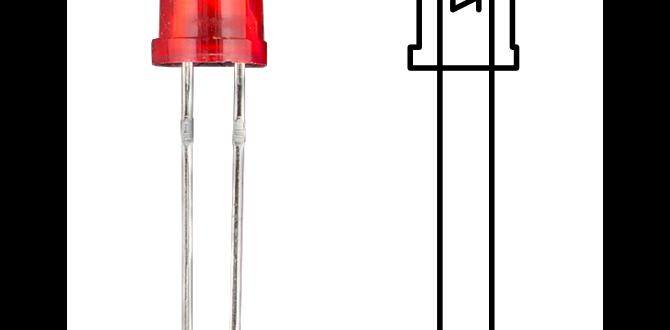Growing your vegetables can be a rewarding and sustainable way to provide fresh produce for your family. While traditional gardening methods involve planting in a designated plot of land, container gardening offers a convenient and space-saving alternative.
One vegetable that thrives in containers is the beet. With their earthy and sweet flavor, beets are delicious and packed with essential nutrients. Whether you have limited outdoor space, want to avoid the hassle of weeding, or simply enjoy the versatility of container gardening, growing beets in containers is a great option for any home gardener.
Here, we will discuss the benefits of growing beets in containers, the necessary materials and steps for success, and helpful tips to ensure a bountiful harvest. With some planning and care, you can easily grow your beets in containers and enjoy the satisfaction of harvesting your homegrown produce.
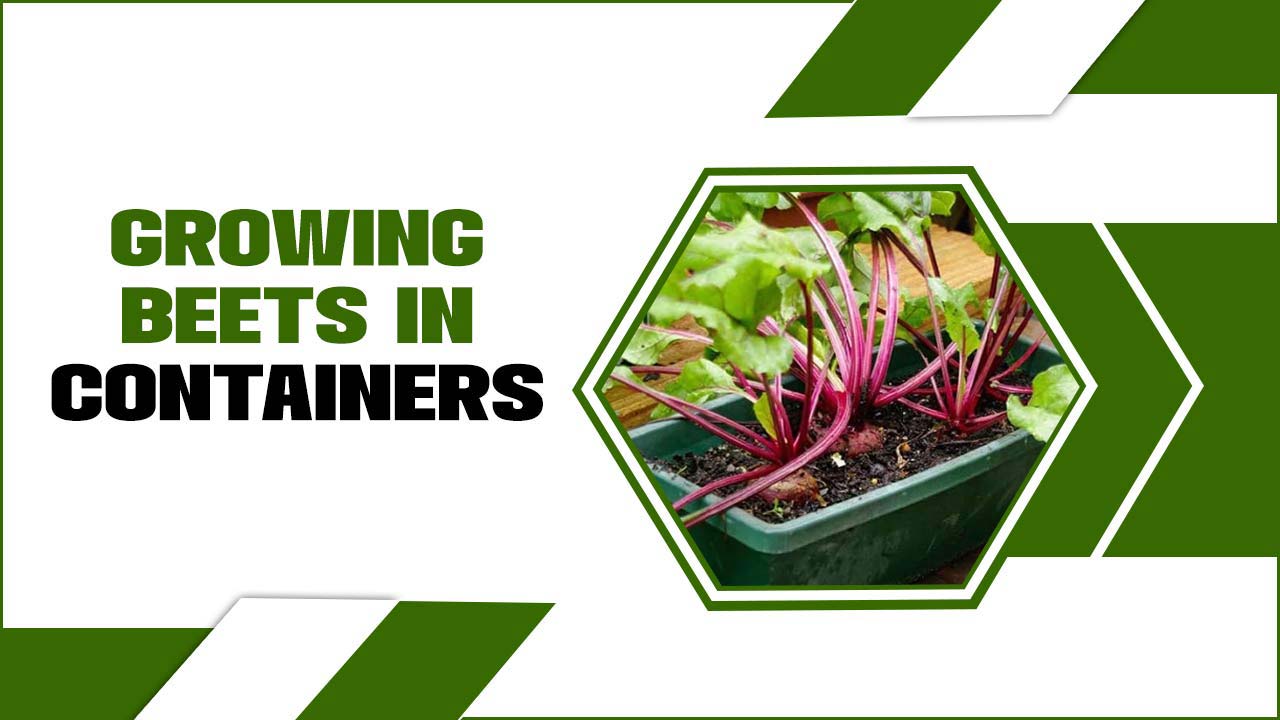
Growing Beets In Containers – Full Discussion
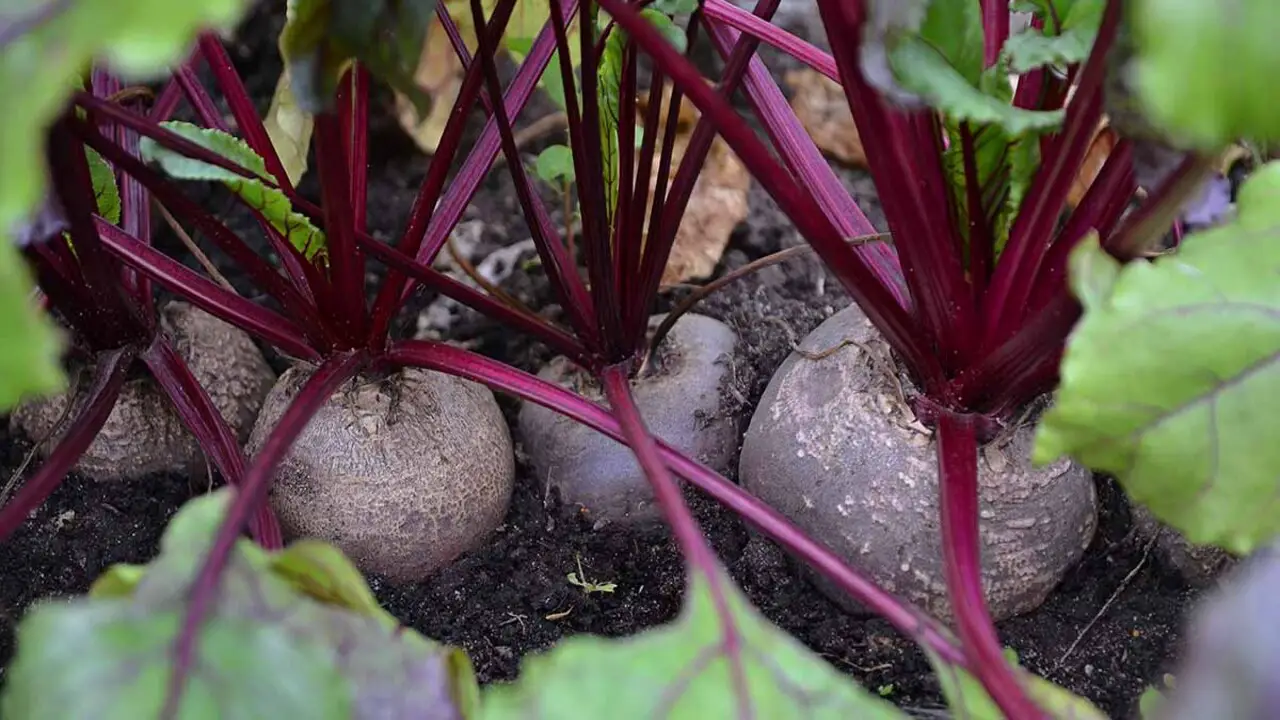
Growing beets in containers is a great option for those with limited space or who prefer cultivating vegetables. Beets are a versatile and nutritious root vegetable that can thrive in containers with proper care and attention. To start, choose a container with a depth of at least 12 inches to allow for the growth of the beet roots.
Fill the container with well-draining potting soil mixed with compost to provide the necessary nutrients. Sow the beet seeds about 1 inch deep and 2 inches apart, and water thoroughly. Beets require consistent moisture, so it’s important to keep the soil moist but not waterlogged.
Place the container in a sunny spot or provide at least 6-8 hours of direct sunlight daily. As the plants grow, thin them 3-4 inches apart to give enough space for the beets to develop. Regularly fertilize with a balanced organic fertilizer to promote healthy growth.
Advantages Of Growing Beets In Pots
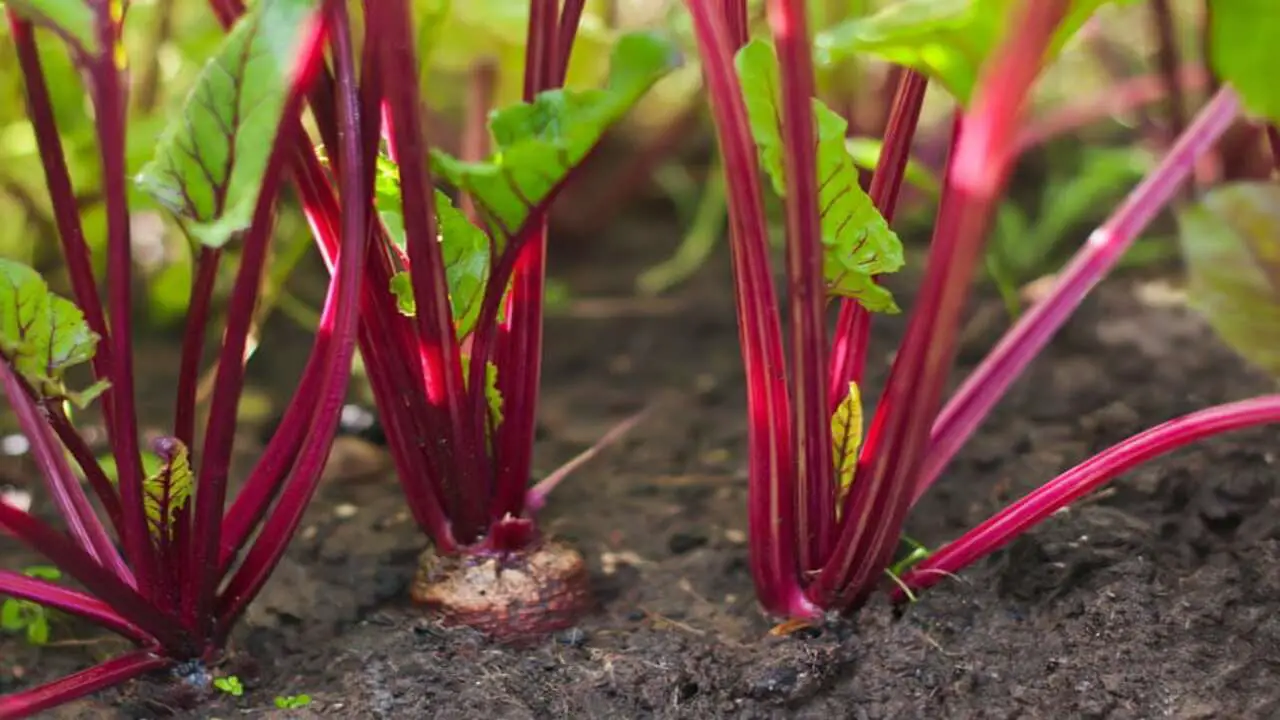
Growing beets in containers offers several advantages for gardeners. Containers enable gardeners to protect their plants from pests and diseases more effectively. They can be placed at an elevated height, reducing the risk of damage from slugs, snails, or other critters. Advantages of growing beets in pots:
- Space-Saving: Growing beets in pots allows you to maximize your limited space. It is especially beneficial for those with small gardens or who live in urban areas with limited gardening space.
- Versatility: Pots allow you to move your beets around, ensuring they receive optimal sunlight and temperature conditions. You can place them in different locations throughout the day to maximize the available light.
- Weed Control: When growing beets in pots, you have better control over weed infestation. Pots create a barrier that prevents weeds from spreading and competing with your beet plants for nutrients and water.
- Disease Management: Container gardening reduces the risk of soil-borne diseases that affect beet plants. Using fresh potting soil and clean containers can minimize the chances of your plants getting infected with diseases.
Disadvantages Of Growing Beets In Containers
Container-grown beets may be more susceptible to drying out due to the limited soil volume. Beets require consistent moisture to thrive, and containers tend to dry out more quickly than garden beds, requiring frequent watering.
Furthermore, container-grown beets may be more prone to nutrient deficiencies as the limited soil volume can deplete nutrients more rapidly. Disadvantages of growing beets in containers:
- Limited Space: Beets require enough space for their roots to grow and develop. Containers may not allow the roots to expand fully, leading to stunted growth and smaller beets.
- Moisture Management: Beets need consistent moisture levels in the soil to thrive. Containers can dry out faster than garden beds, requiring frequent watering to maintain adequate moisture levels. Failure to do so can result in wilting or stunted growth.
- Nutrient Limitations: Container-grown plants rely solely on the nutrients in the potting soil or fertilizers added. Beets are heavy feeders and require rich, well-balanced soil to produce large, healthy roots. Ensuring proper nutrition in a container can be more challenging than garden beds.
- Heat stress: Containers can heat up quickly, especially in hot climates or when placed in direct sunlight. Beets are cool-season crops and may struggle to tolerate high temperatures
Do Beets Grow Well In Containers?

Growing beets in containers can be a successful endeavor. Beets have relatively shallow roots, which makes them suitable for container gardening. Ensure the container you choose is at least 8-10 inches deep to accommodate the beet roots. Use well-draining soil mixed with compost, and sow the beet seeds about 1 inch apart.
Ensure the container receives at least 6-8 hours of sunlight daily. Keep the soil consistently moist but not soggy. Thin the seedlings to about 3-4 inches apart once they have sprouted. Beets are ready to harvest when they reach the desired size, usually around 2-3 months after sowing.
When Can I Plant Beets In Pots?
To plant beets in pots, you can start in early spring or late summer, depending on your location. Beets prefer cooler temperatures, so aim for a time when the average daily temperature is between 50-75°F (10-24°C). Sow the beet seeds directly into the pots, around 1 inch (2.5 cm) deep and 2 inches (5 cm) apart.
Ensure the pots have good drainage, and use a well-draining potting mix. Place the pots in a sunny spot or an area with partial shade. Regularly water the plants to keep the soil evenly moist. Beets typically take 55-70 days to mature, but you can start harvesting baby beets around 30 days after planting.
How Much Depth Do Beets Need?

To grow beets successfully, they require a depth of at least 6-8 inches. This allows the roots to develop properly and ensures optimal growth. However, if you have loose and well-draining soil, you can get away with a shallower depth of around 4-6 inches. It’s important to note that beets have a taproot that can grow long, so providing sufficient depth will help them thrive.
Do Beets Need A Lot Of Sun To Grow?
Beets generally prefer full sun to grow well. They need at least 6-8 hours of direct sunlight daily for optimal growth. However, they can tolerate some shade, especially in hotter regions. If you are growing beets in containers, place them where they can receive the maximum sunlight. This will help promote healthy growth and development of the beets. Additionally, ensure they have well-draining soil and regular watering to ensure successful growth.
How Much Water Do Beets Need?
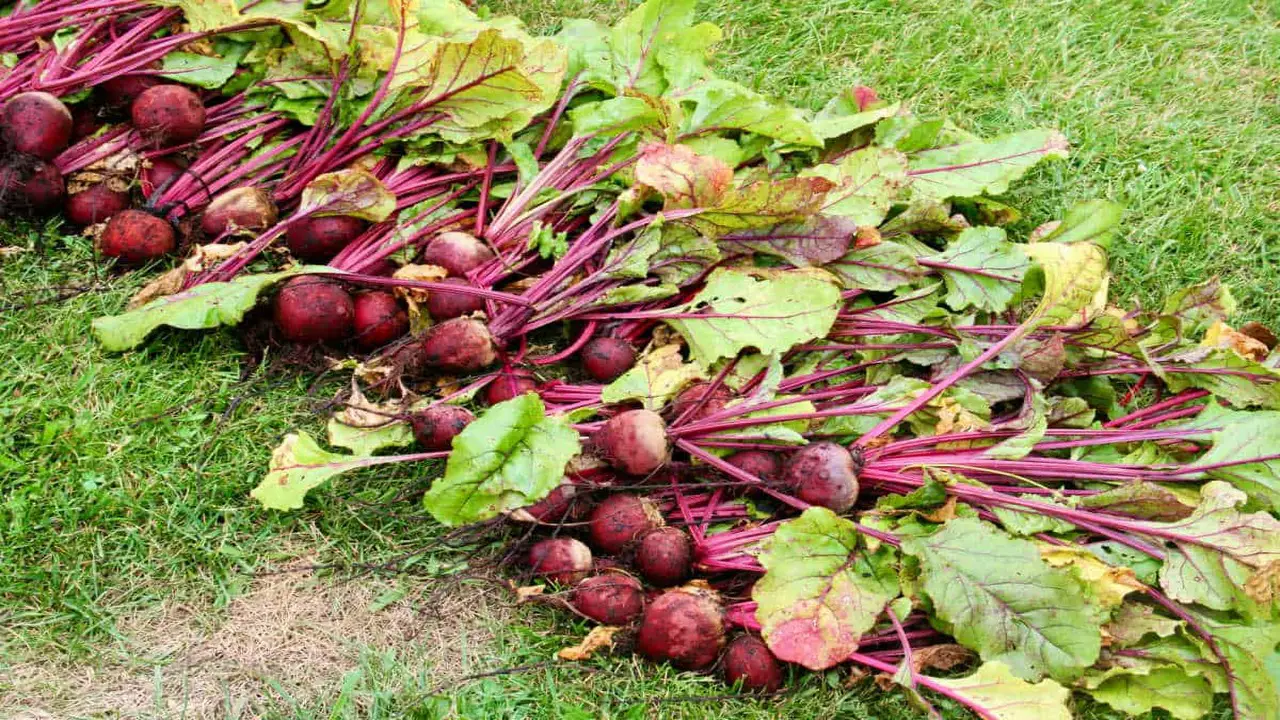
To grow peas in containers, it’s important to provide adequate water. Peas generally require about 1 inch of water per week, including rainfall. However, the water needs may vary depending on the weather conditions and the growth stage.
Monitoring the soil moisture levels and providing supplementary watering when needed is essential. Be sure to water deeply and evenly, allowing the water to reach the root zone of the plants. Avoid overwatering, as peas prefer well-drained soil.
Additionally, mulching around the plants can help retain moisture and reduce evaporation. Regularly check the soil’s moisture content by inserting your finger into the soil to determine if it’s dry or moist. Adjust your watering schedule to ensure the peas receive adequate water for healthy growth.
What Type Of Soil Do Beets Need?
Beets prefer well-drained soil that is loose, fertile, and rich in organic matter. They thrive in soil with a pH level between 6.0 and 7.5. It is important to ensure the soil is loose and friable to allow the roots to grow properly. Additionally, beets require soil free of rocks and clumps to prevent misshapen or stunted roots.
Adding compost or well-rotted manure to the soil can help improve its fertility and structure. Beets also prefer consistent moisture, so keeping the soil evenly moist throughout the growing season is important.
Do You Need To Fertilize Beets Growing In Pots?
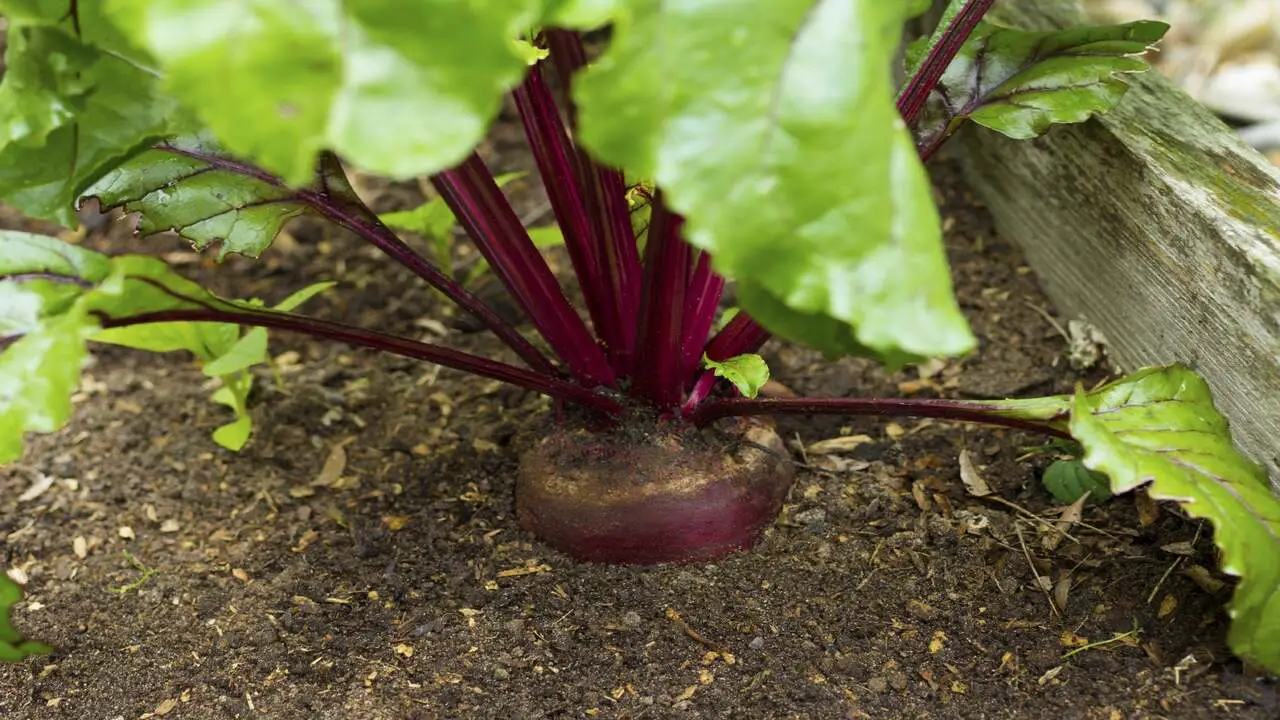
Fertilization is not typically required for healthy plant growth. Peas are considered nitrogen-fixing plants, which means they can convert atmospheric nitrogen into a form usable by the plant.
This natural process helps provide sufficient nutrients for the plants to thrive. However, if you notice any signs of nutrient deficiency, such as yellowing leaves or poor growth, you can consider using a balanced organic fertilizer to provide additional nutrients.
It is important to follow the instructions on the fertilizer packaging and avoid over-fertilization, as this can lead to excessive foliage growth at the expense of pea pod production. Regular watering and proper sunlight exposure are also crucial factors in ensuring the success of your pea plants in containers.
Pests And Diseases
Pests and diseases can affect peas grown in containers, just like in any other gardening method. It is important to be vigilant and take preventive measures to protect your beet plants from potential threats. One common pest that can harm beet plants is the aphid.
These tiny insects can quickly multiply and feed on the leaves and stems of the plants, causing significant damage. Regularly inspect your beet plants for any signs of aphids, such as curled or distorted leaves, and take immediate action if you spot them. Here are some common pests and diseases to watch out for:
- Aphids: These small insects suck sap from the plant, causing stunted growth and curled leaves. Use insecticidal soap or neem oil to control aphid populations.
- Powdery Mildew: This fungal disease is a white powdery coating on leaves and stems. Provide proper air circulation and avoid overhead watering to prevent powdery mildew. Fungicidal sprays may be necessary for severe infections.
- Pea Leaf Weevil: These beetles feed on pea leaves, causing irregular notches along the edges. Hand-picking and applying insecticides can help control their population.
- Pea Moth: The larvae of this moth feed on pea pods, causing damage and reducing yields. Use pheromone traps and remove affected pods to control their numbers.
Harvesting And Storing Beets
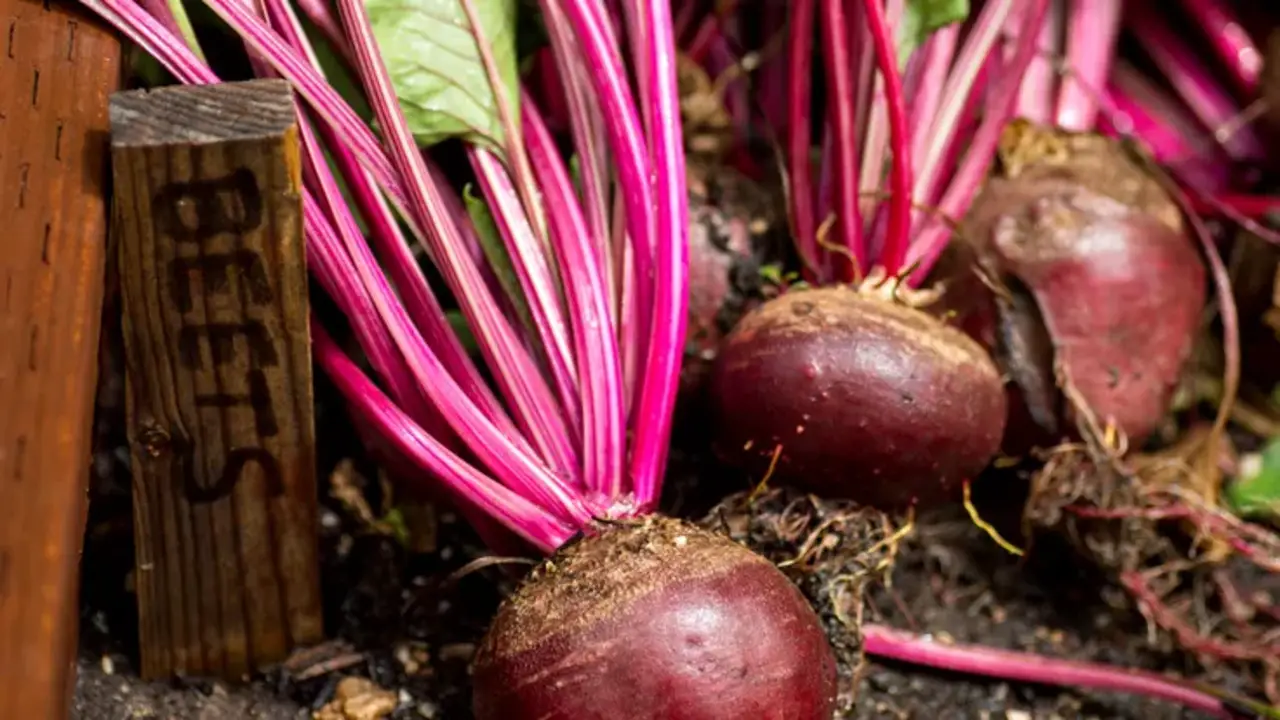
Harvesting and storing beets in containers can be a rewarding experience, not only during the cultivation process but also when it comes time to harvest and store the delicious root vegetables. Also, harvesting beets is relatively simple and can be done once they have reached the desired size, usually around 2-3 inches in diameter.
To harvest, gently loosen the soil around the base of the beet and carefully pull it out, being cautious not to damage the foliage or neighboring plants. Harvesting and Storing Beets:
- Timing Of Harvest: Beets are typically ready for harvest 8-10 weeks after planting. You can check if they are ready by gently pulling one from the ground – if it is about the size of a golf ball or larger, it is ready to be harvested.
- Harvesting Technique: To harvest beets, gently loosen the soil around the base of the plant using a garden fork or shovel. Carefully lift the beets from the ground, being cautious not to damage the roots or leaves.
- Cleaning: Remove any excess soil from the beets once harvested. Do not wash them, as this may reduce their storage life.
- Trimming: Cut off the beet greens, leaving about an inch of the stems attached to the root. This helps prevent the beets from bleeding color during storage.
Troubleshooting Common Problems
Troubleshooting common problems. Growing beets in containers can be a rewarding and convenient way to enjoy these nutritious root vegetables. Still, like any gardening endeavor, it is not without its challenges.
Fortunately, many common problems that may arise when growing beets in containers can be easily troubleshooted. One common issue is overwatering, leading to root rot and stunted growth. Here are some troubleshooting tips for common problems when growing beets in containers:
- Poor Germination: If your beet seeds are not germinating properly, it could be due to old or low-quality seeds. Use fresh seeds and follow the recommended planting depth and spacing. Keep the soil consistently moist but not soggy.
- Yellowing Leaves: Yellow leaves on your beet plants can indicate a nutrient deficiency, particularly a lack of nitrogen. Consider adding a balanced fertilizer or organic compost to provide the necessary nutrients. Also, ensure that your container has proper drainage to prevent waterlogged soil.
- Pests: Beets can be susceptible to aphids, flea beetles, and slugs. Inspect your plants regularly for signs of infestation. You can use insecticidal soap or organic pest control methods to manage the problem if pests are present.
Try Growing Beets In Pots Yourself!
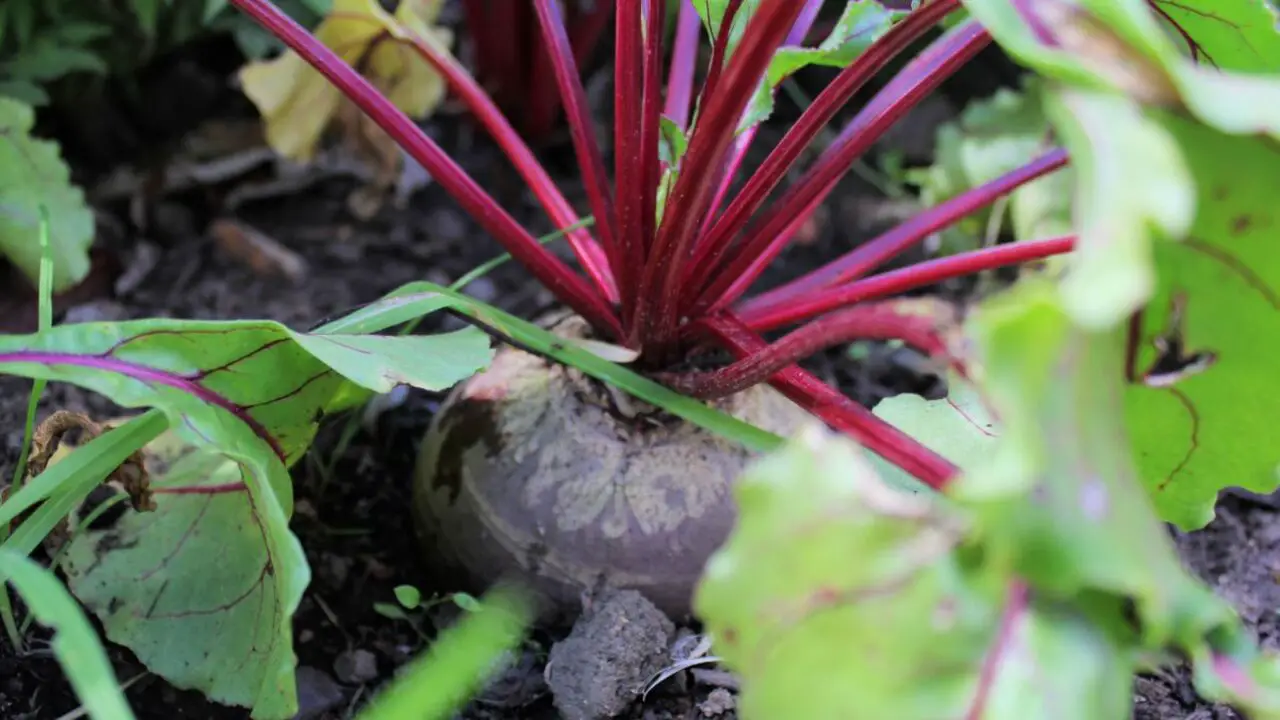
Growing beets in containers is a great option for those with limited space or want more control over the growing conditions. Containers allow for flexibility in location, making it possible to grow beets on a patio, balcony, or even a small backyard.
Additionally, growing beets in containers allows for better soil quality and moisture management, leading to healthier and more productive plants. Here are some tips to help you successfully grow beets in pots:
- Container Selection: Choose a pot or container 12 inches deep to allow enough room for the beetroots to develop. Ensure that the container has good drainage holes to prevent waterlogging.
- Soil Preparation: Beets prefer loose, well-draining soil. Use a quality potting mix or blend equal parts garden soil, compost, and sand. Avoid compacted or heavy soils, as they can hinder root growth.
- Sowing Seeds: Sow beet seeds directly into the container, following the recommended spacing on the seed packet. Plant the seeds about 1/2 inch deep and cover them with soil. Water gently after planting.
- Sunlight And Temperature: Beets thrive in full sun, so place your container in a location that receives.
Conclusion
Growing beets in containers can be a rewarding and convenient way to produce fresh, nutritious vegetables at home. With the right preparation and care, these root vegetables can thrive in container gardens, providing a bountiful harvest for any home gardener.
One advantage of container-growing beets is the ability to control their growing environment. Containers allow for easy monitoring of soil moisture levels, ensuring that the beets receive the right amount of water.
Remember to choose the right container size, provide adequate sunlight and water, and use quality soil and fertilizer for optimal growth. With these tips in mind, you can enjoy the satisfaction of growing your beets in a container, no matter how much space you have.
FAQ
1.What Are The Key Considerations When Choosing A Container For Growing Beets?
Ans: When choosing a container for growing beets, there are a few key considerations to remember. First, the container size should be large enough to accommodate the beet plant’s roots and allow for proper growth. The container should also have adequate drainage to prevent waterlogging and root rot.
2.How Often Should Beets Be Watered When Grown In Containers?
Ans: Beets grown in containers should be watered regularly, aiming for a consistent soil moisture level. Check the soil’s moisture by sticking your finger into it – if it feels dry up to your first knuckle, it’s time to water. Avoid overwatering, as it can lead to root rot, but also ensure not to let the soil dry out completely.
3.Are There Any Specific Soil Requirements?
Ans: Yes, there are specific soil requirements for different plants and crops. Some plants prefer well-drained soil, while others require soil with high moisture retention. The soil’s pH level also plays a crucial role in plant growth, with some plants thriving in acidic soil while others prefer alkaline conditions.
4.Can Beets Be Grown In Containers Indoors?
Ans: Yes, beets can be successfully grown in containers indoors. They are well-suited for container gardening because their roots don’t require a great soil depth. Choose a container at least 8-10 inches deep, fill it with a well-draining potting mix, and sow beet seeds according to the instructions on the seed packet.
5.What Are Some Common Pests Or Diseases That May Affect Beets When Grown In Containers?
Ans: Some common pests and diseases that may affect beets when grown in containers include aphids, leafhoppers, and flea beetles. These pests can cause damage to the leaves and stems of the plants.
Diseases such as powdery mildew, root rot, and leaf spot can also be problematic for container-grown beets. Proper sanitation, regular monitoring, and the use of organic pest control methods can help prevent and manage these issues.




